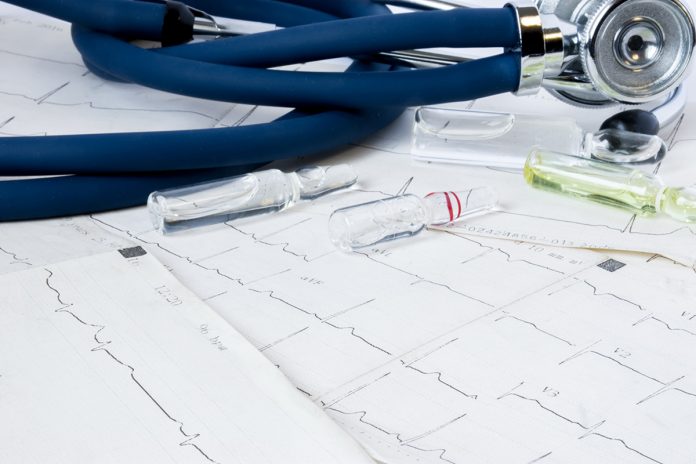János G. Filep, MD from the University of Montreal and Maisonneuve-Rosemont Hospital in Canada, discusses targeting immune mechanisms underlying cardiovascular diseases
Despite considerable progress in diagnosis and treatment in the last decades, cardiovascular diseases (CVD), including heart infarction, stroke and sepsis, still remain the leading cause of morbidity and mortality in Western societies, highlighting the need of further understanding of basic pathogenetic mechanisms, as well as the development of novel therapeutic interventions. Mounting evidence indicates a pivotal role for inappropriate innate and adaptive immunity in the development of many cardiovascular disorders.
Cardiovascular immunology research
Cardiovascular immunology is a research area that investigates the highly integrated cross-talk between the cardiovascular and the immune systems under physiological and pathological conditions. The complexity of the immune system and its essential role in defence against invading pathogens require novel approaches to identify mechanisms that underlie pathological disorders and to specifically counter these mechanisms without compromising defence mechanisms against pathogenic microorganisms.
Protective versus non-resolving inflammation
The acute inflammatory response is localised self-limited innate host defence mechanisms against invading pathogens and tissue injury. The inflammatory response normally involves a resolution phase that following tissue injury quells inflammation, leads to repair and restores tissue homeostasis. Resolution is an active process governed by specialised pro-resolving lipid and protein mediators. These mediators function as stop signals for the recruitment of inflammatory cells to the inflamed site, facilitate the removal of inflammatory cells from the inflammatory locus and promote tissue repair.
By contrast, excessive recruitment of neutrophils and inadvertent release of their antimicrobial armamentarium leads to collateral tissue damage that amplifies inflammation and may continue to chronicity. Inefficient inactivation and removal of emigrated inflammatory cells delay resolution and return to homeostasis. Hence, it is critical to appreciate the mechanisms and mediators involved in resolution for minimising damage to the surrounding tissue and for return to homeostasis.
Immune sensing of distress and damage within the vessel wall
Within the injured vessel wall, there are multiple cell types with direct roles in disease pathogenesis, including endothelial cells, vascular smooth muscle cells and leukocytes. Molecules released from invading pathogens (pathogen-associated molecular patterns or PAMPs, such as formyl-peptides, bacterial DNA, flagellin and LPS, or damaged cells (damage-associated molecular patterns or DAMPs, HMGB1, ATP, heat-shock proteins and nucleic acids), can activate other cell types, including immune cells. By binding to the same receptors, DAMPs trigger responses that resemble those seen following infections. For instance, formyl peptides of bacterial and mitochondrial origin signal through formyl-peptide receptors, whereas bacterial or mitochondrial DNA binds to Toll-like receptor 9.
The mechanisms of vascular diseases encompass elements of acute inflammation, including endothelial dysfunction, oxidative stress, excessive leukocyte recruitment and activation, delayed neutrophil apoptosis and polarization of macrophages towards M1 or pro-inflammatory phenotype. Endothelial dysfunction represents the initial step in the development of most cardiovascular diseases. While the molecular mechanisms that disrupt endothelial homeostasis are still not completely understood, lymphocytes and myeloid cells have been recognised as major determinants of endothelial health with the ability to trigger or inhibit inflammation. Unbalanced lipid metabolism and maladaptive immune responses leading to chronic inflammation in the arterial wall initiate atherosclerotic plaque formation and drive plaque progression. Unstable atherosclerotic plaques also exhibit signs of failed resolution.
A potential mechanism that localises inflammation within the vessel wall is the classical acute-phase reactant C-reactive protein (CRP). CRP is now appreciated as a modulator of innate immunity, rather than a mere biomarker of inflammation. However, CRP has been reported to exert many often contradictory biological properties. Studies including ours revealed that CRP exists in conformationally distinct forms that exhibit opposing biological functions. Dissociation of CRP into its subunits on the surface of activated endothelial cells or platelets results in expression of pro-inflammatory actions that contribute to localization of the inflammatory reaction to the vessel wall. Therefore, elucidating the mechanisms of how conformational changes lead to the expression of “hidden” pro-inflammatory activities in native CRP is critical for understanding its role in cardiovascular diseases.
The role of neutrophils in vascular inflammation, and in atherosclerosis, in particular, has long been underappreciated. Recent studies revealed the causal contribution of neutrophil-driven mechanisms from initiation of atherosclerotic plaque formation through plaque destabilization to triggering acute coronary syndromes or stroke, as well as for orchestrating tissue repair after myocardial infarction. Generation of reactive oxygen species and release of granule contents, including myeloperoxidase, elastase, cathepsins, proteinase 3, and neutrophil extracellular traps (NETs) have an important role in the activation of innate and adaptive immunity, as well as in inflicting collateral tissue damage. Neutrophils can also drive macrophage polarization towards a reparative M2 phenotype after myocardial ischemia-reperfusion, thereby promoting cardiac repair. Thus, the dichotomous roles of neutrophils in pathogenic and repair processes have important consequences for designing neutrophil-targeted therapeutic strategies.
Accumulating evidence challenges the classical view that neutrophils represent a homogeneous population. Indeed, neutrophils sense and integrate signals from the inflammatory microenvironment, which, in turn, alter their life span and capacity to undergo phenotypic and functional changes and metabolic and transcriptional reprogramming. These would set the foundation for neutrophil heterogeneity under pathological conditions. Indeed, neutrophils may acquire the ability to return to the bloodstream after migrating into the vessel wall (reverse endothelial transmigration) under ischemic conditions or exit through the lymphatic vessels to trigger adaptive immunity in the lymph node. Transcriptional activation of neutrophils and secretion of various cytokines may shape macrophage functions. Within the inflammatory locus, neutrophils have an adaptable lifespan. They may undergo apoptosis, programmed necrosis (necroptosis) or release extracellular traps (NETosis) with important consequences for host defence and disease.
Clearance of neutrophils from injured tissues via efferocytosis is critical for efficient resolution and impaired neutrophil removal has harmful consequences. Thus, exploring the mechanisms that govern phenotypic and functional heterogeneity of neutrophils is essential to develop neutrophil-targeted therapies, though linking neutrophil phenotype subsets to specific functions is challenging.
Promoting resolution: A novel therapeutic opportunity
Resolution of inflammation is an active process, enabling the affected tissues to repair damage and restore function. The resolution phase of self-limiting inflammation is skewed toward pro-resolving mediators as illustrated by changes in protein and lipid profiles. Conversely, defective activation of resolution mechanisms contributes to excessive or prolonged inflammatory response to the initial insult. For example, stable atherosclerotic plaques exhibit a controlled chronic inflammation phenotype, whereas defect in pro-resolution mechanisms precedes plaque rupture that triggers clinical symptoms.
Our data showed that activation of Toll-like receptor 9 with either bacterial or mitochondrial DNA is associated with markedly reduced production of pro-resolving lipid mediators, such as 15-epi-lipoxin A4 and resolvin D1, likely contributing to the propagation of tissue injury in mouse models. Restoring defective endogenous resolution circuits is anticipated to promote repair and return to homeostasis by correcting the imbalance between pro-inflammatory and pro-resolving mediators. Indeed, recent research identified many endogenous resolution programmes that can be harnessed as terrain for new immunoresolvent therapies.
The current treatments for inflammation can efficiently alleviate symptoms of inflammation (swelling and pain), but usually do not promote, or may even delay resolution and tissue repair. An attractive alternative approach would be to stimulate egress of neutrophils from inflamed tissues. Results from preclinical models indicate that this can be accomplished by treatment with specialised pro-resolving lipid mediators, such as lipoxins and resolvins and protein mediators, including annexin A1 and interferon-β. These pro-resolving mediators can prevent the deleterious effects of excessive or prolonged neutrophil-mediated inflammation, stimulate self-limited innate immune responses, and protect blood vessels and the heart (and other organs) against damage. While large-scale clinical trials with these compounds seem distant, initial results with targeting neutrophil-specific functions (for example, inhibition of neutrophil elastase or promoting degradation of neutrophil extracellular traps) hold promise as a disease-modifying intervention.
Clearly, further studies are needed to investigate whether therapeutic interventions to facilitate removal of pathogenic leukocytes from inflamed tissues will lead to resolution of inflammation in the blood vessels of patients. One should note that sex differences in the resolution of inflammation have been observed in both mice and humans. These differences can, at least in part, be attributed to increased levels of D-series resolvins in females. Clearly, additional studies are warranted to further explore sex-related differences in resolution mechanisms for the development of more efficient and personalised therapies.
*Please note: This is a commercial profile











